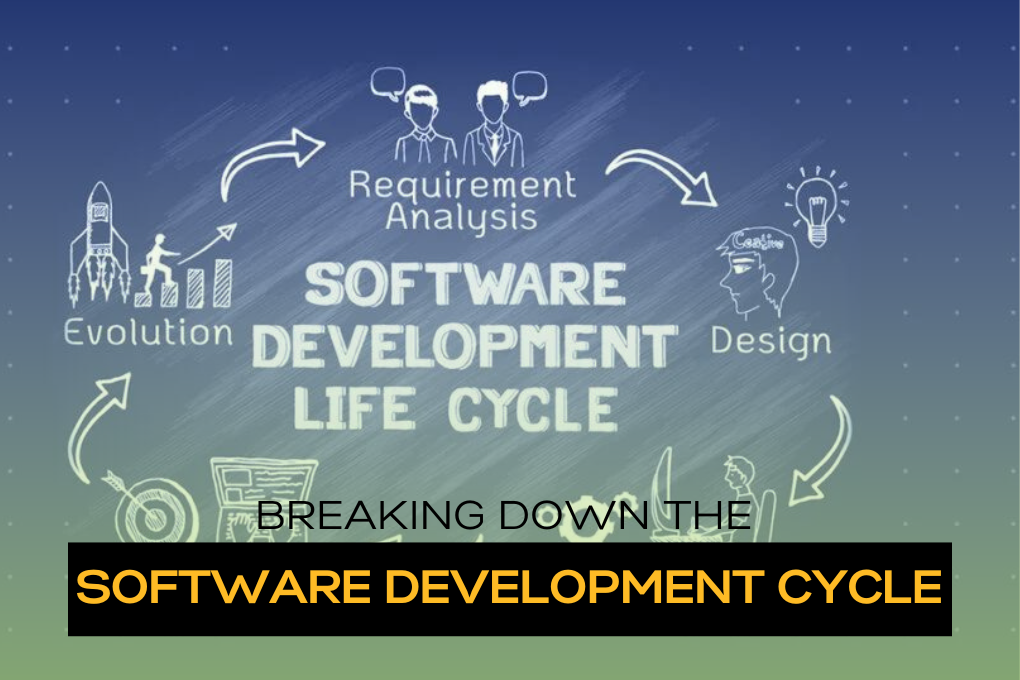Breaking down the Software Development Life Cycle
Ever wondered how the apps on your phone or the software on your computer are made? Let’s take a fun ride through the world of software development, making it super simple to understand. Imagine building a house; each step in software development is like a stage in constructing your dream home, from planning the layout to moving in! Plus, I’ll sprinkle in some cool trends for 2024 and job insights to spice things up.
Introduction to SOFTWARE DEVELOPMENT LIFE CYCLE
Welcome to the fantastic world of software development! It’s like piecing together a giant puzzle where every piece must fit perfectly. This process is crucial for creating everything from the apps that wake you up in the morning to the websites you browse at night. Let’s break down this journey, step by step, and see how recent trends are shaping the future of software making.
Planning: Imagine planning a road trip. You decide your destination, the route to take, and the snacks you’ll munch on. Similarly, in software development, planning is about setting goals and deciding the path to achieve them. This stage sets the stage for all that follows.
- Technologies: Project Management Tools like Jira, Trello, or Asana for task allocation and tracking.
- Trends: Integration of AI-driven project management assistants for predictive analytics and better resource allocation.
Domains for Example:
- Business Analysis
- Project Management
- Stakeholder Management
Analysis: Now that we know where we’re headed, it’s time to zoom in on the details. It’s like when you pack for your trip; you need to make sure you have everything you need. In software terms, we break down the big idea into smaller tasks and pinpoint potential challenges.
- Technologies: Requirement Management Tools like IBM Rational DOORS or Microsoft Azure DevOps for gathering, documenting, and managing requirements.
- Trends: Increasing use of machine learning algorithms for requirement analysis and automated documentation generation.
Domains for Example:
- Requirements Engineering
- System Analysis
- Risk Analysis
Design: Think of this as sketching out the blueprint of your house. It’s not just about making it look pretty; it’s also about making sure it’s practical and comfy. Designers ensure that the software feels intuitive and easy to use, enhancing your interaction with it at every touchpoint.
- Technologies: Design Tools like Adobe XD, Sketch, or Figma for creating wireframes, mockups, and prototypes.
- Trends: Adoption of augmented reality (AR) and virtual reality (VR) in the design process for immersive user experience prototyping.
Domians for Example:
- System Architecture
- User Interface Design
- Data Modeling
Development: Here’s where we build the software. It’s akin to the construction phase of your house. Thanks to AI and tools like Python, this process is becoming faster and more accurate. Developers write code that brings all our plans and designs to life.
- Technologies: Programming Languages like Python, JavaScript, Java, and frameworks like React, Angular, or Django for coding.
- Trends: Continued rise of low-code/no-code platforms for rapid application development and increased utilization of serverless architecture for scalability and cost-effectiveness.
Domains for Example:
- Software Engineering
- Database Development
- API Development
Testing: Just as you’d inspect a house before moving in, testing in software development ensures everything works just right. It’s about catching any issues and fixing them before anyone uses the software. Modern tools help us test more efficiently, ensuring a smooth experience for users.
- Technologies: Test Automation Tools like Selenium, Appium, or Cypress for automated testing, and tools like JMeter for performance testing.
- Trends: Implementation of AI-driven testing for intelligent test case generation and execution, and increased adoption of shift-left testing methodologies for early bug detection.
Domians for Example:
- Quality Assurance
- Performance Testing
- Security Testing
Deployment: The big day! Just like throwing a housewarming party, this is when we launch the software for people to use. With practices like DevSecOps, we make sure that security is baked in from the start, keeping the software safe from any threats.
- Technologies: Continuous Integration/Continuous Deployment (CI/CD) tools like Jenkins, GitLab CI, or GitHub Actions for automating the deployment pipeline.
- Trends: Emphasis on containerization with technologies like Docker and Kubernetes for efficient deployment and management of microservices, and focus on DevSecOps practices for integrating security throughout the software development lifecycle.
Domains for Example:
- Operations Management
- Change Management
- Release Coordination
Trending Now – What’s Hot in 2024:
- Security First: With cyber threats on the rise, embedding security from the start is more crucial than ever.
- Cloud Computing: Just like storing your photos online, software development is moving to the cloud, making it more flexible and powerful.
- Low-Code/No-Code: Imagine building apps without needing to be a coding guru. That’s what these platforms do, making app creation accessible to everyone.
- Global Talent Pool: Thanks to remote work, companies can hire the best talents from around the world, enriching their teams with diverse skills.
- API Economy: This is about making software pieces talk to each other smoothly, creating a seamless experience across different services.
Adding Value with Job Insights: The demand for skilled software developers is skyrocketing. In 2024, the software market revenue is expected to reach a whopping $698.80 billion, with millions of developers worldwide making magic happen with code. So, if you’re thinking about a career in software development, now’s a great time to dive in.


